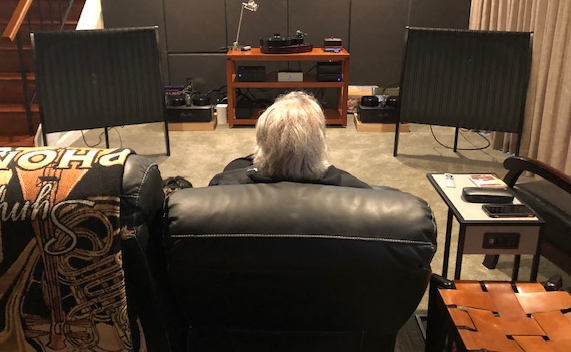
Speakers are part of any system, but if you are like me, it may take you a while to learn what speakers you like best. It’s been a while since we’ve shared a Throwback Thursday post with you, but here’s a good one that takes you through my journey of discovering what kind of speakers I like. It’s been a journey, but it has also been a fun trip!
Understanding What I Like in a Speaker
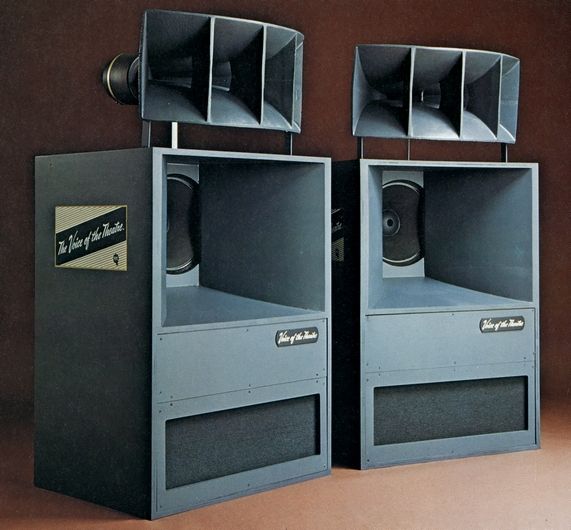 My first milestone in learning to understand speakers came over 40 years ago. I was a freshman at Baylor University, and the first speakers I owned were small KLH 17s followed by small Advents. They went in the windows of my dorm room, which allowed me to turn them around so that they could play outside for all to hear. Oh, come on, admit it. You probably thought everyone wanted to hear your music when you were that age. Maybe you still do.
My first milestone in learning to understand speakers came over 40 years ago. I was a freshman at Baylor University, and the first speakers I owned were small KLH 17s followed by small Advents. They went in the windows of my dorm room, which allowed me to turn them around so that they could play outside for all to hear. Oh, come on, admit it. You probably thought everyone wanted to hear your music when you were that age. Maybe you still do.
Then, I discovered Stereophile and The Absolute Sound, which was both a good thing and a bad thing. At the time, these magazines were small with no ads and very long-winded reviews, and I devoured every word. Like many of you, I was particularly enthralled by Harry Pearson, and when he said that I could get near state of the art sound from two pairs of large Advents, I started saving.
But then something happened. I had a chance to hear an older guy’s system, well he was over 30 anyway which seemed really old to me since I wasn’t 20 yet. This guy recorded most of the concerts at Baylor University, and he had a system that consisted of Marantz tube electronics, a Garrard 301 mounted into a heavy recording console along with a couple of Ampex reel-to-reel tape recorders. The speakers were the Altec Voice of the Theaters. I had never heard anything like this system, so to say I was blown away is a huge understatement.
What was so special about this system was that first and foremost, it was a lot of fun to listen to. It was more like live music, and it moved me. I didn’t have the money for a system like that, but I did learn what I liked in a speaker.
Discovering Transparency
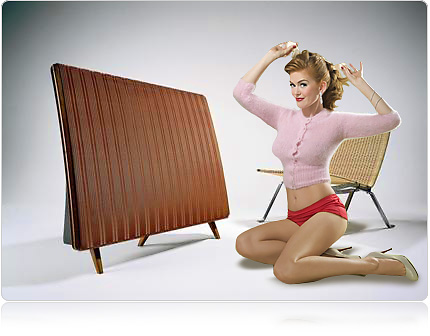 I wrote about this in my previous milestones post, but the second milestone for me with speakers was hearing my friend Ken Askew’s Quad ESLs. The sound of those speakers that we now call Quad 57s kept haunting me as it would for years to come. They had transparency in spades whether I had ever heard of the word or not. I have now come to discover that transparency is one of the two things I value most in hi-fi; the other is correct tonal colors. By the way, I love this French Quad advertisement from the fifties.
I wrote about this in my previous milestones post, but the second milestone for me with speakers was hearing my friend Ken Askew’s Quad ESLs. The sound of those speakers that we now call Quad 57s kept haunting me as it would for years to come. They had transparency in spades whether I had ever heard of the word or not. I have now come to discover that transparency is one of the two things I value most in hi-fi; the other is correct tonal colors. By the way, I love this French Quad advertisement from the fifties.
So, eventually, I traded my Mac 1700 receiver for a Quad 303 amp, a 33 preamp, and a 33RFM tuner. I saved for a few months and purchased a used pair of Quad 57s. I loved them more dearly than any other speaker I have ever owned, but I also found them to be very frustrating.
A couple of years later, I even purchased a second pair and stacked them. I thought these would be my speakers forever, and in some ways, they should have been. A stacked pair of Quad ESL could do almost everything you could have ever wanted except for, imagine, really deep bass and not beam. A stacked pair sounded a little better than a single pair if you were standing, but still, they beamed.
During my stacked-Quads period, Becky and I met and got married, and she has seen me through many loudspeaker changes over the years. The Quad 57s had to go when we moved and there was no place for the monoliths, so I started down the road of trying to find a box speaker that sounded like the Quads. I settled on another English speaker, a pair of KEF 104s. They weren’t Quads, but they were nice, and they had that great English way of getting the tonal balance right.
Speakers and Soundstage
I have never owned Altec Voice of the Theater speaker nor this third milestone speaker which I actually happened to hear while I still owned the Quads. I was visiting a new audio dealership in Dallas to hear the Heil Plasma Speakers. Well, I wasn’t very impressed with the way they sounded, although I was rather awed about the cool blue glow of the plasma midrange/tweeter and the sheer size of the cabinet with its huge woofer. Still, it was not the expensive, impressive, big Heils that changed my audio-life that day.
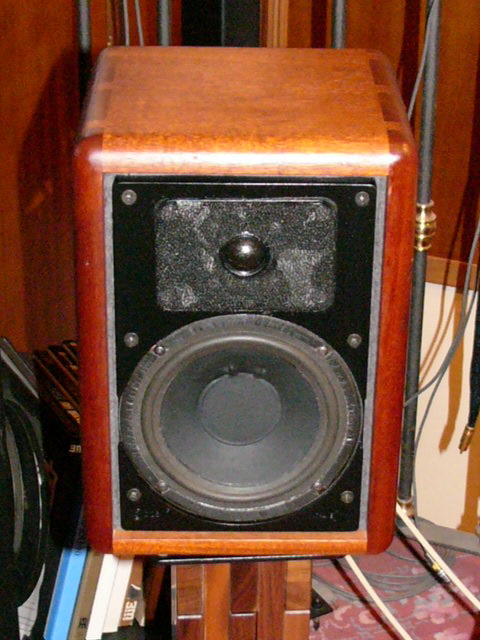 No, it was a pair of speakers no larger than most shoeboxes from a speaker company I had never heard of, Cizek. Roy Cizek was from quite a musical family and was a well-respected engineer who had worked for Acoustic Research, Audio Dynamics, and for Altec Lansing. Anyway, the speaker I heard that day that impressed me was his Cizek KA-1s. It was what we commonly call today a mini-monitor, but back then speakers this small were called bookshelf speakers (truth is the KA-1s were smaller than most bookshelf speakers) because that’s where they were usually placed. The KA-1s were made of Koa wood with beautiful dovetail joints and beautifully finished.
No, it was a pair of speakers no larger than most shoeboxes from a speaker company I had never heard of, Cizek. Roy Cizek was from quite a musical family and was a well-respected engineer who had worked for Acoustic Research, Audio Dynamics, and for Altec Lansing. Anyway, the speaker I heard that day that impressed me was his Cizek KA-1s. It was what we commonly call today a mini-monitor, but back then speakers this small were called bookshelf speakers (truth is the KA-1s were smaller than most bookshelf speakers) because that’s where they were usually placed. The KA-1s were made of Koa wood with beautiful dovetail joints and beautifully finished.
These little speakers were also the first ones that I had ever seen or heard that were placed on tall stands and positioned way out in the room. Of course, I would later see both the little Rogers and Spendor LS3/5A monitors on stands, but at that time they were always placed very near the walls to get the most bass.
According to the dealer, despite their size, Roy Cizek insisted the KA-1s be placed four to five feet out into the room and at least three feet from the side walls, and no further apart than eight feet. In his showroom, this put them about six feet from the side walls. He also had me sit much closer to them than I was used to back then. But while the setup seemed different, in no way did it prepare me for what I heard. The little KA-1s produced a sound that was both wider and deeper than the big Heils. They also did something I didn’t know was possible; they produced a sound that seemed to come from well outside the speakers. So in my early 20s, I discovered what would become an audiophile obsession, soundstage, image width, and depth.
Like many audiophiles, I was fascinated with these audio artifacts that became known as “sound staging”. For many years this became the most important thing for many audiophiles who read The Absolute Sound, Stereophile, and other such publications that were popping up. Truth is, it still is an obsession for many. I sure was part of this group for years. I owned Spica TC-50s and then Spica Angelus. The Angelus speakers were really great speakers, and I probably should have kept them for years, but I heard a pair of Celestion SL700 speakers with their matching stands, and I had to have them.
These were the ultimate in a mini-monitor at the time. The rigid cabinet was fabricated from Ciba-Geigy’s Aerolam material in a honeycomb form. They were gray Nextel in color, and there were little spikes that bolted the stands to the speakers. In other words, the cabinet was both dead and light-bolted to a very heavy stand that was then spiked to the floor. The soundstage was huge, deep, and wide. There was a sound coming from three feet outside the speakers and the soundstage floated several feet behind the speakers. The top end was extended and silky smooth, the midrange was very detailed and the bass was tight and quick.
High-Efficiency Speakers, Flea-Powered Amps
At first, I loved the Celestion speakers, and for the money I had spent on them, I had hoped so. Unfortunately though, the longer I owned them I became bored with them. It was about this time that I began to read Joe Roberts’ magazine Sound Practices. I called him and talked about how I was feeling about my system, and he suggested I try some high-efficiency speakers. I didn’t really know where to start, but an audio bud of mine had a pair of Klipsch Forte speakers and thought they sounded fun. There weren’t many high-efficiency speakers to choose from in the nineties, but I sold my two Beard amps and my SL 700s and bought a pair of the Fortes and a 300B SET amp designed by Dennis Had. I don’t sorry remember the name of the amp, but it wasn’t one of the expensive Cary amps.
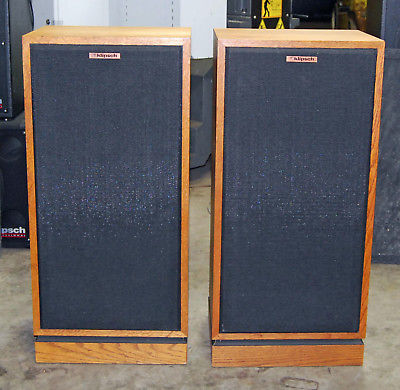 The Klipsch Forte speakers were far from perfect; they didn’t produce much of a soundstage, they didn’t completely disappear, the horn honked just a bit and the woofer boomed just a little and was soft with the little 300B amp. I should point out here that the amp had cheap 300B tubes in it.
The Klipsch Forte speakers were far from perfect; they didn’t produce much of a soundstage, they didn’t completely disappear, the horn honked just a bit and the woofer boomed just a little and was soft with the little 300B amp. I should point out here that the amp had cheap 300B tubes in it.
Still, with all this, I knew there would be no turning back for me from high-efficiency speakers with low power amps. Why? It was simple. They sounded more alive and were so much fun to listen to. In the next dozen years, I spent a lot of time finding the high-efficiency speakers that sounded alive and were emotionally involving.
This search led me to listen to horns, Audio Notes Es, and single-driver speakers. The Audio Note E speakers were where I landed for several years. and I’ll admit I could still be happy with them to this day, but in the end, my search led me to a great single-driver speaker, the Teresonic XRs. These speakers turn out to be the only ones with Lowther drivers that I could live with, but man I love these. There is something really great about single-driver speakers that are over 100 dB efficient.
Getting My Expectations in the Correct Order
 This final milestone leads me to the speakers that I have now owned for over 10 years, the Teresonic XRs with Lowther DX4 drivers. It took me a long time, but I have come to grips with what I expect from a speaker and a system, but if my speakers can’t deliver, I’m out of luck. The three things I want are:
This final milestone leads me to the speakers that I have now owned for over 10 years, the Teresonic XRs with Lowther DX4 drivers. It took me a long time, but I have come to grips with what I expect from a speaker and a system, but if my speakers can’t deliver, I’m out of luck. The three things I want are:
1. Emotional involvement
2. As Harry Pearson said, I want recorded music to sound like
music, and not just musical
3. Sonic artifacts
The first two items on the list are really hard to separate if like me. you find live music emotionally involving. I think these items are also rather self-evident in their meaning. Though I should say I am talking about more than a sound that makes me tap my toe to the music. I’m talking about truly being moved after listening to a great performance.
The second expectation will take some explanation. When I say it needs to sound like music, I’m in no way saying it should be musical in the audiophile sense of being warm, rich, and somewhat lacking in detail. I want the sound of my system to be as musically realistic as possible compared to live music. I listen for the timing of the music and how it flows. I also listen to the voices of instruments and how they interplay with each other. And, yes, the system shouldn’t color the sound, but real music has tonal colors that I want to be able to hear. I want to hear the timbre of the instruments and the harmony of the music. Then last but not least, music has to have volume, dynamics, and tempo, so speakers have to be able to reproduce that as well. To sound like music, for example like a piano, you have to have a somewhat balanced output from the bottom octaves to the top ones.
Part of what moved sonic artifacts down the list to number three for me was discovering how much I could enjoy mono recordings since many of the sonic artifacts are not produced on a mono recording. Don’t get me wrong, but these non-musical sonic artifacts are part of the recording process, and I in no way want to suggest that these don’t contribute to the emotional involvement of music.
Of these the most important to me is transparency, and guess what, it’s also a part of a mono recording. By transparency, I’m quoting what Peter Walker, designer of the Quad ESL speakers, said the purpose of a speaker was, “… to throw open the window on a musical performance and not to just clean the window.” That is the best definition of transparency I know. Then, there is space, which again is something you can hear on a good mono recording but not to the extent that you can play a stereo recording, even on a really good set of speakers. There is also the layering of the music and resolution of the details on the recording, and the soundstage, which is the ability to have the sound come from different points in space as a part of a cohesive whole and not just floating around in space.
Well, these thoughts bring me up to where I am today when it comes to what I expect from a pair of speakers. My priorities do not have to be your priorities, but maybe this post will help you figure out your priorities. Trust me, I’ve spent years and thrown away a lot of money figuring out what I like in speakers. You can’t get the right fit for your system until you know what you’re looking for. I welcome your comments and questions.
Note: Don’t miss Jack’s next post where he explains why he owns two different pairs of speakers and uses them both for his reviews.

